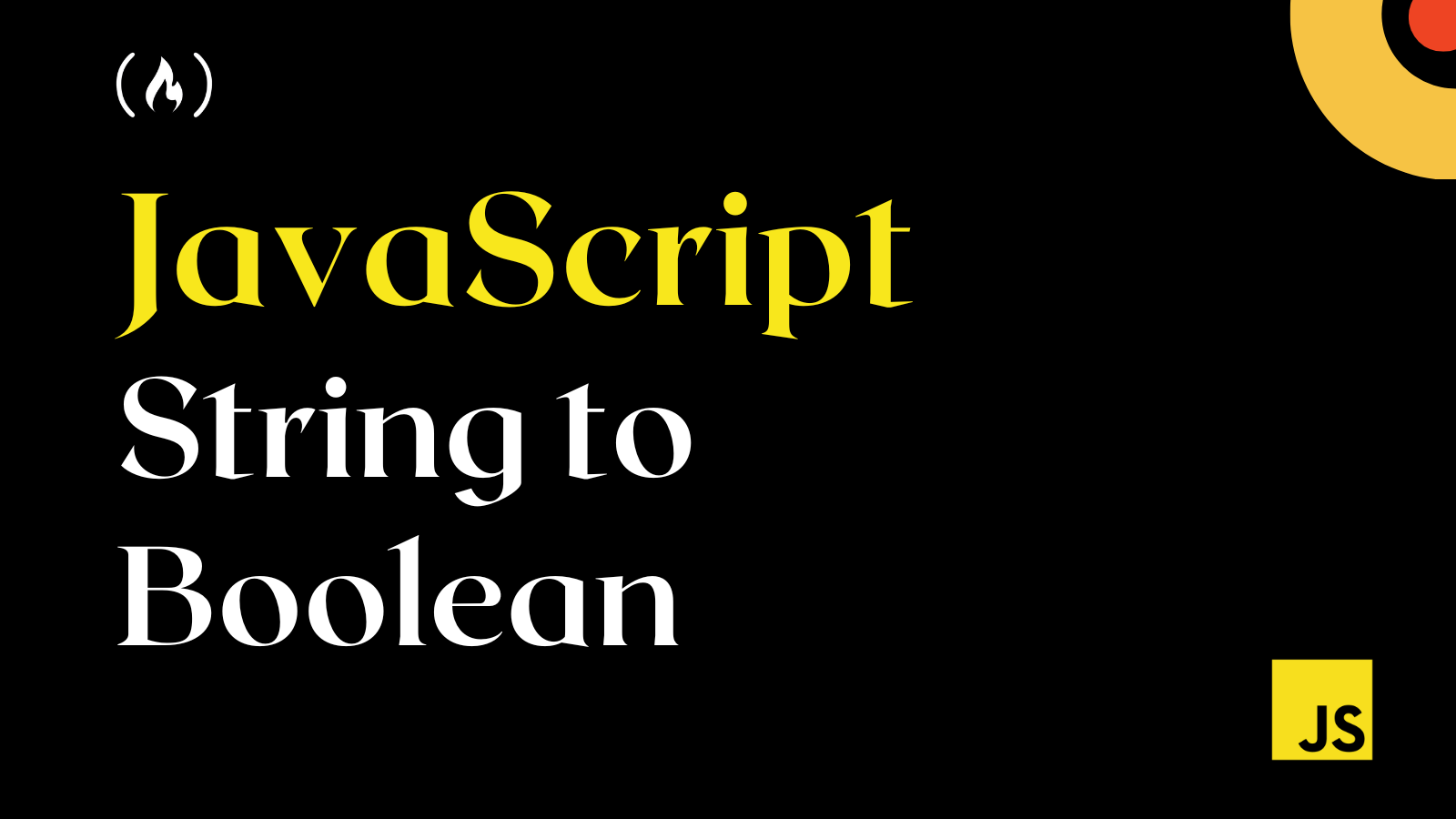When you're manipulating data, receiving values from forms, and dealing with data in other ways, these values may take the incorrect datatype.
Assume you want your value to be a boolean with either true or false, but it is stored as a string – "true" or "false." It becomes challenging to use for your intended purpose, so you must first convert these boolean string values to actual boolean values.
In this article, you will learn how to convert a string to a boolean value using different methods in JavaScript. In case you are in a rush, here is how you can do it:
// Using identity operator
console.log((boolString === "true")); // true / false
// Using Regex
console.log((/true/).test(boolString)); // true
If you are not in a rush, let’s understand each of the methods and lots more.
How to Parse a String to a Boolean with the Identity Operator (===)
The strict operator is another name for the identity operator. It will only return true if the two values being compared are the same. This implies that their letter case – and everything else – must also be the same. Otherwise, it will return false.
In this case, you want to convert a string to a boolean, which means you'll compare it to the string "true". If both values are the same, it will return the boolean value true, otherwise, it will return the boolean value false.
let boolString = "true";
let boolValue = (boolString === "true");
console.log(boolValue); // true
This is a strict equality operator and will be strict with letter case comparison:
let boolString = "True";
let boolValue = (boolString === "true");
console.log(boolValue); // false
You can fix this using the toLowerCase() method, so it first converts the string value to the letter case that fits your comparison and then compares.
let boolString = "True";
let boolValue = (boolString.toLowerCase() === "true");
console.log(boolValue); // true
Another method very similar to the identity operator is the regex method, where you can test if two values match.
How to Parse a String to a Boolean with Regex
Regex stands for Regular Expressions. It is a vast programming topic and you can use regex as a pattern to match and test string character combinations.
A very simple guide to regex will tell you that the expression is placed between two slashes (/). For example, if you want to test for the true string value, you'd do this:
let boolString = "true";
let boolValue = (/true/).test(boolString);
console.log(boolValue); // true
This also is case sensitive:
let boolString = "True";
let boolValue = (/true/).test(boolString);
console.log(boolValue); // false
You will have to add the i flag at the end of the regular expression to allow for a case-insensitive match.
let boolString = "True";
let boolValue = (/true/i).test(boolString);
console.log(boolValue); // true
How to Parse a String to a Boolean with the Double NOT Operator (*!!*)
You should also know how to use the single NOT operator, which you can use to invert a result.
When you add the single NOT operator in front of a string, it will either return true or false. If it’s an empty string, it will return true otherwise, false:
let stringValue1 = !'true';
let stringValue2 = !'';
console.log(stringValue1); // false
console.log(stringValue2); // true
This is not what you want. Rather, you want to convert a string to a boolean, meaning when the string is empty, it should return false, and in every other case, it should return true.
This is when you can use the double NOT logical operator. You use it to invert the result of the single NOT operator:
let stringValue1 = !!'true';
let stringValue2 = !!'';
console.log(stringValue1); // true
console.log(stringValue2); // false
You use this method to convert any string value to a boolean. When it is empty, it returns false. Otherwise it returns true.
One disadvantage of this method is that you cannot convert a string of "false" to a boolean value of false. It will only return false when it is an empty string.
How to Parse a String to a Boolean with a Boolean Wrapper
The JavaScript Boolean object represents a boolean value. This method works just like the double NOT operator.
// Syntax
Boolean()
When you pass a string value into the Boolean object, it will evaluate to true, but when you pass an empty string, it will evaluate to false.
let stringValue1 = Boolean('true');
let stringValue2 = Boolean('');
console.log(stringValue1); // true
console.log(stringValue2); // false
The only limitation with this method is that if you add space between the quote to represent string, it will return true — meaning it regards it as a string.
let stringValue = Boolean(' ');
console.log(stringValue); // true
Note: When you convert a string of "false", you’d expect it to return a boolean value of false. But this will return true because it only returns false when it’s an empty string.
Wrapping up
In this article, you have learned how to convert a string value to a boolean. The best approach that covers all scenarios is the identity equality operator, while the Boolean object and double logical NOT have better syntax.
Have fun coding!

